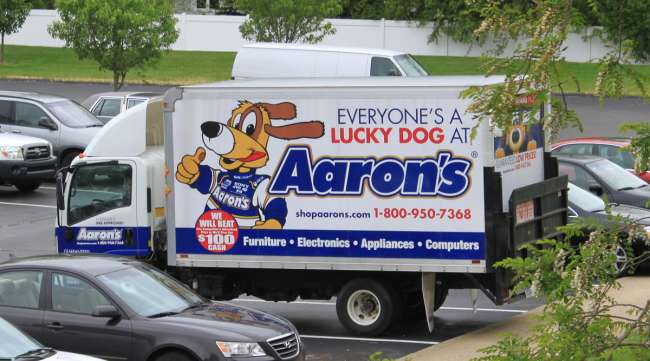Managing Editor, Features and Multimedia
Insourcing Versus Outsourcing Final-Mile Transportation

[Stay on top of transportation news: Get TTNews in your inbox.]
As demand for final-mile delivery continues to expand, retailers must decide whether to outsource home delivery to a third-party carrier or handle it in-house through a private fleet.
That decision typically comes down to factors such as cost, quality of service and overall business priorities, said Dennis Cohen, head of supply chain at Aaron’s, a lease-to-own retailer of furniture, appliances and electronics.
Aaron’s, for one, has opted to keep its delivery service in-house.
“From our analysis — and we’ve gone through this several times — outsourcing can’t touch us on cost,” Cohen said during a presentation at Home Delivery World in Philadelphia. “Cost is by far our chief rationalization for keeping it in-house. There’s a large gap.”
Aaron’s Home Delivery conducts 5,000 to 15,000 outbound deliveries per day, he said.
To support this service, the company employs 3,300 product technicians who provide home delivery and installation of refrigerators, living room sets, large televisions and other heavy goods.
But Cohen acknowledged that recruiting and retaining those workers isn’t easy. “We have high turnover in this position, and it’s a challenge for us.”
Aaron’s operates 3,000 last-mile trucks — mostly 16-foot vehicles with liftgates — that are domiciled at the company’s stores, with two or three per location.
One key consideration for any company looking to operate its own delivery fleet is ensuring it has adequate density to support it.

►Fleets expand to keep up with e-commerce
►Top 100 Private interactive map
►Valley Proteins turns grease into gold
►Reducing emissions in shipping
Sector Rankings
Food Service | Grocery
Beverage
Petroleum/Chemical
Industrial Gases | Agriculture/Food Processing
Wholesale/Retail | Manufacturing Equipment Rental | Building Materials
Waste Management
Paper/Office Products
Construction
Health Care
Uniform Rental
Media & Entertainment
“You’ve got to have the customers to keep your trucks running if you’re going to insource it,” Cohen said.
A detailed cost analysis also is essential, he said. In addition to labor and equipment, fleet costs include fuel, insurance and many other expenses.
“There are tons of hidden costs,” Cohen said. “For us, [those include] packaging, disposal fees and tools. We need tools to install [products].”
Product returns and repairs, which Cohen described as “the killers in last-mile delivery,” also can be major expenses.
On the other hand, one benefit of outsourcing is the opportunity to hand off some of the inherent risks in home delivery.
“Part of outsourcing is you have someone else take on this risk,” Cohen said. “We’re driving trucks. We’re in people’s houses. We’re dealing with expensive items.”
But even if companies outsource final-mile delivery, they still must have in-house talent to handle the relationship with the third-party transportation provider.
“You don’t just hand it off. You need to have people in-house who know how to manage third parties,” Cohen said.
Companies should also consider whether final-mile delivery is a competitive differentiator or simply a commodity, he said. Although Amazon and others have set a high bar for home delivery, customer expectations vary from one business type to another.
“Our customer is not the eBay customer, or Amazon customer,” Cohen said. “We have some flex time, but if we need to make that same-day delivery, we will.”
While Aaron’s has chosen to insource final-mile delivery, the company will re-evaluate that question every year, Cohen said.
Looking ahead, Aaron’s will focus on boosting utilization of its trucks, he said. The company also is piloting smaller, more nimble delivery vehicles and has identified a need for better customer management and notification technology.

